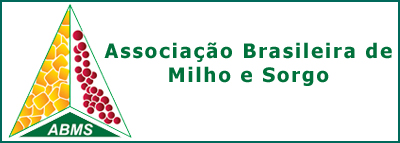CULTIVARES DE MILHO AFETADAS PELA ÉPOCA DE SEMEADURA NA SAFRINHA EM TOCANTINS
DOI:
https://doi.org/10.18512/1980-6477/rbms.v16n3p469-480Keywords:
Milho safrinha, Ferrugem polissoraAbstract
RESUMO - O estresse hídrico e a ocorrência de doenças foliares são os principais desafios para o cultivo do milho safrinha em Tocantins, que é realizado no final do período chuvoso. O presente trabalho teve como objetivo avaliar o efeito da época de semeadura e das doenças foliares no desempenho de cultivares de milho cultivado na safrinha em Tocantins. Foram avaliadas 11 cultivares nas safrinhas de 2014 e 2015. As semeaduras foram realizadas em 03/02/2014, 25/02/2014, 12/02/2015 e 12/03/2015. Foi utilizado o delineamento experimental de blocos ao acaso, em arranjo fatorial 11x2 (cultivares x épocas de semeadura). Foram observadas diferenças para os fatores cultivares e épocas de semeadura para todas as variáveis estudadas. O atraso na época de semeadura reduziu drasticamente a produtividade da cultura do milho safrinha, por causa da intensa restrição hídrica após a fase de florescimento. As maiores produtividades foram obtidas para os plantios realizados no início do mês de fevereiro. As cultivares AG7088 PRO, AS1596 PRO e DKB310 PRO apresentaram maior estabilidade e potencial produtivo. A severidade da ferrugem-polissora foi maior nos plantios realizados no início de fevereiro, e reduziu com o atraso na semeadura. As cultivares mais suscetíveis foram 30F53 YF e CD355.
Palavras-chave: milho safrinha, ferrugem-polissora, estresse hídrico.
CORN CULTIVARS AFFECTED BY SOWING TIME AT OFF-SEASON IN TOCANTINS, BRAZIL
ABSTRACT – Water stress and occurrence of foliar diseases are the main challenges for the cultivation of off-season corn in Tocantins, which is carried out at the end of the rainy season. The objective of this work was to evaluate the effect of sowing season and foliar diseases on the performance of corn cultivars in the State of Tocantins, Brazil, at off-season. Eleven cultivars were evaluated in the 2014 and 2015 off-season. Sowing was performed on 02/03/2014, 02/25/2014, 02/12/2015 and 03/12/2015. Randomized block experimental design was used in factorial arrangement 11x2 (cultivars x sowing times). Differences were observed for the cultivar and sowing times for all variables studied. The delay in the sowing season drastically reduced the off-season corn yield, due to the intense water restriction after the flowering phase. Highest yields were obtained for the planting carried out at the beginning of February. The cultivars AG7088 PRO, AS1596 PRO and DKB310 PRO presented greater stability and yield potential. Southern rust severity was higher in the planting carried out in early February, and reduced with the sowing delay. The most susceptible cultivars were 30F53 YF and CD355.
Keywords: off-season corn, southern rust, water stress.
Downloads
Published
How to Cite
Issue
Section
License
Authors retain copyright and grant the journal right of first publication with the work simultaneously licensed under the Creative Commons Attribution License that allows the sharing of work and recognition of the work of authorship and initial publication in this journal.
Authors are able to take on additional contracts separately for non-exclusive distribution of the version of the paper published in this journal (eg, in an institutional repository or publish as a book), with acknowledgment of its initial publication in this journal.
Authors are permitted and encouraged to post their work online (eg, in institutional repositories or on their website) at any point before or during the editorial process, as this may leadto productive exchanges, as well as increase the impact and citation of published work.



